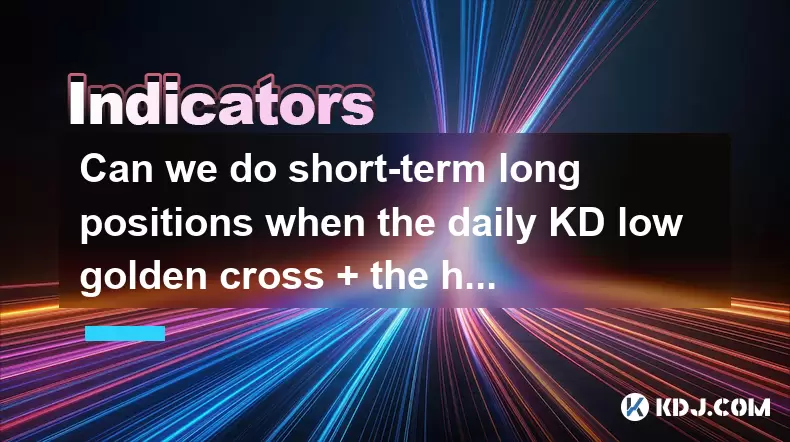-
 Bitcoin
Bitcoin $109,507.9823
0.43% -
 Ethereum
Ethereum $2,716.0274
3.79% -
 Tether USDt
Tether USDt $1.0003
-0.01% -
 XRP
XRP $2.3859
3.05% -
 BNB
BNB $665.2705
0.56% -
 Solana
Solana $154.6874
1.56% -
 USDC
USDC $1.0002
0.02% -
 TRON
TRON $0.2896
1.05% -
 Dogecoin
Dogecoin $0.1738
1.67% -
 Cardano
Cardano $0.6117
3.72% -
 Hyperliquid
Hyperliquid $40.3052
3.82% -
 Sui
Sui $2.9817
2.08% -
 Bitcoin Cash
Bitcoin Cash $505.0944
0.71% -
 Chainlink
Chainlink $14.0820
1.96% -
 Stellar
Stellar $0.2902
12.90% -
 UNUS SED LEO
UNUS SED LEO $9.0423
-0.34% -
 Avalanche
Avalanche $18.7084
1.54% -
 Hedera
Hedera $0.1714
6.33% -
 Shiba Inu
Shiba Inu $0.0...01218
2.48% -
 Toncoin
Toncoin $2.8261
1.24% -
 Litecoin
Litecoin $88.8228
1.59% -
 Monero
Monero $319.1344
2.71% -
 Polkadot
Polkadot $3.5479
2.69% -
 Dai
Dai $1.0001
0.00% -
 Ethena USDe
Ethena USDe $1.0010
0.06% -
 Uniswap
Uniswap $8.2690
6.49% -
 Bitget Token
Bitget Token $4.3622
1.19% -
 Aave
Aave $298.5989
2.11% -
 Pepe
Pepe $0.0...01042
1.97% -
 Pi
Pi $0.4663
1.15%
Can we do short-term long positions when the daily KD low golden cross + the hourly line breaks through the previous high?
A daily KD low golden cross signals oversold conditions, and when combined with an hourly breakout, it offers a high-probability entry for long trades.
Jul 09, 2025 at 04:35 am

Understanding the Daily KD Low Golden Cross
In technical analysis, the KD indicator (Stochastic Oscillator) is a key momentum tool used by traders to identify potential trend reversals. A daily KD low golden cross occurs when the fast line (K) crosses above the slow line (D) at a value below 20 on the daily chart, signaling that the asset may be oversold and due for a reversal.
This condition suggests accumulation by smart money or institutional traders who are entering long positions after a downtrend. The daily timeframe provides strong confirmation of a shift in momentum, making it a critical point for traders looking to enter long positions with higher probability setups.
It's important to note that while this signal is powerful, it should not be traded in isolation. Combining it with other timeframes or price action confirmations can significantly improve its reliability.
The Role of Hourly Chart Breakouts
Once a daily KD low golden cross has been confirmed, the next step is to monitor the hourly chart for breakout signals. Specifically, traders look for a breakthrough of the previous high on the hourly timeframe as a sign of short-term strength.
This breakout serves as a confluence between the daily bullish setup and intraday momentum. When the price surpasses the most recent hourly resistance level, it indicates that buying pressure is increasing and short-term sentiment is shifting upwards.
Traders often use candlestick patterns or volume surges to further validate the breakout. For instance, a bullish engulfing pattern or a candle closing above the previous high with increased volume adds weight to the entry signal.
Combining Timeframes for Higher Probability Entry
Trading based on multiple timeframe analysis enhances the quality of entries. In this case, the daily KD low golden cross sets up the broader context, while the hourly breakout confirms the timing.
- Align daily and hourly trends: Ensure both timeframes are showing signs of bullish momentum.
- Monitor support/resistance levels: Look for confluences where the breakout coincides with historical support or Fibonacci levels.
- Use moving averages: Check if the price is trading above key moving averages like the 50-period or 200-period EMA on the hourly chart.
By combining these elements, traders increase the odds of successful trades even within a short-term holding period.
Risk Management Considerations
Even with a strong setup like the daily KD low golden cross and an hourly breakout, risk management remains crucial. Entering a trade without defining risk parameters can lead to significant losses despite favorable odds.
- Set stop-loss orders: Place them just below the recent swing low on the hourly chart to protect against false breakouts.
- Define take-profit targets: Use previous resistance zones or set a fixed risk-reward ratio such as 1:2 or 1:3.
- Position sizing: Adjust position size according to account size and volatility of the cryptocurrency pair being traded.
Additionally, avoid overleveraging during volatile market conditions. Cryptocurrencies are known for their rapid price swings, so prudent capital allocation is essential.
Practical Execution Steps
To execute this strategy effectively, follow these steps:
- Step 1: Identify a daily KD low golden cross by checking if K crosses above D below the 20 level on the daily chart.
- Step 2: Switch to the hourly chart and wait for the price to move above the previous hourly high.
- Step 3: Confirm the breakout using volume or candlestick patterns to ensure it’s not a fakeout.
- Step 4: Enter the trade once the candle closes above the previous high with clear confirmation.
- Step 5: Set a stop-loss below the nearest support level and define a profit target based on prior resistance or measured move objectives.
Using platforms like TradingView or Binance with customizable indicators allows traders to quickly scan for these setups across multiple cryptocurrencies.
Backtesting and Historical Validation
Before applying this strategy live, backtesting can help assess its viability across different market cycles. Historical data from major cryptocurrencies like Bitcoin, Ethereum, and altcoins can provide insights into how frequently this setup leads to profitable outcomes.
- Use tools like TradingView’s Strategy Tester or Python-based libraries such as
backtraderto simulate past performance. - Analyze win rate, average gain/loss, and drawdown metrics to refine entry and exit rules.
- Avoid curve-fitting by testing across various coins and market conditions.
Backtesting results should guide adjustments rather than guarantee future profits, but they offer valuable feedback on the strategy’s robustness.
Frequently Asked Questions
Q: Can this strategy be applied to all cryptocurrencies?
A: While the setup works well on major cryptocurrencies like BTC and ETH, smaller altcoins may exhibit erratic behavior and low liquidity, which can reduce the effectiveness of the signal.
Q: What if the breakout fails after entering the trade?
A: This is why setting a stop-loss is essential. If the price drops below the defined support level, it's a sign the setup has failed, and exiting helps preserve capital.
Q: Should I always wait for the candle to close before entering?
A: Yes, waiting for the hourly candle to close above the previous high reduces the risk of entering on a false breakout caused by wicks or sudden volatility spikes.
Q: How do I determine the appropriate take-profit level?
A: You can base it on the distance between the entry point and the recent swing low (measured move), or use static resistance levels identified through chart patterns or Fibonacci extensions.
Disclaimer:info@kdj.com
The information provided is not trading advice. kdj.com does not assume any responsibility for any investments made based on the information provided in this article. Cryptocurrencies are highly volatile and it is highly recommended that you invest with caution after thorough research!
If you believe that the content used on this website infringes your copyright, please contact us immediately (info@kdj.com) and we will delete it promptly.
- NEXBRIDGE, NEXPLACE, and the Bitcoin Ecosystem: Building a New Financial Frontier
- 2025-07-09 23:10:13
- MEXC Launchpad & PUMP Token: Grab a 40% Discount?
- 2025-07-09 22:50:12
- Trade System Revolution: How XDC and the End of Faxes Are Reshaping Finance
- 2025-07-09 23:10:13
- Ripple, CLARITY Act, and the XRP Case: A New York Minute on Crypto Regulation
- 2025-07-09 23:50:12
- No Rs 50 Coin? Delhi HC Hears Why India Prefers Banknotes
- 2025-07-09 23:15:11
- No Rs 50 Coin? Delhi HC Hears Why Banknotes Reign Supreme
- 2025-07-09 23:50:12
Related knowledge

How to trade Dogecoin based on funding rates and open interest
Jul 07,2025 at 02:49am
<h3>Understanding Funding Rates in Dogecoin Trading</h3><p>Funding rates are periodic payments made to either long or short traders ...

What is the 'God Mode' indicator for Dogecoin
Jul 07,2025 at 04:42pm
<h3>Understanding the 'God Mode' Indicator</h3><p>The 'God Mode' indicator is a term that has emerged within cryptocurrency trading ...

Using Gann Fans on the Dogecoin price chart
Jul 07,2025 at 09:43pm
<h3>Understanding Gann Fans and Their Relevance in Cryptocurrency Trading</h3><p>Gann Fans are a technical analysis tool developed b...

How to spot manipulation on the Dogecoin chart
Jul 06,2025 at 12:35pm
<h3>Understanding the Basics of Chart Manipulation</h3><p>Chart manipulation in the cryptocurrency space, particularly with Dogecoin...

Dogecoin market structure break explained
Jul 07,2025 at 02:51am
<h3>Understanding the Dogecoin Market Structure</h3><p>Dogecoin, initially created as a meme-based cryptocurrency, has evolved into ...

How to backtest a Dogecoin moving average strategy
Jul 08,2025 at 04:50am
<h3>What is a Moving Average Strategy in Cryptocurrency Trading?</h3><p>A moving average strategy is one of the most commonly used t...

How to trade Dogecoin based on funding rates and open interest
Jul 07,2025 at 02:49am
<h3>Understanding Funding Rates in Dogecoin Trading</h3><p>Funding rates are periodic payments made to either long or short traders ...

What is the 'God Mode' indicator for Dogecoin
Jul 07,2025 at 04:42pm
<h3>Understanding the 'God Mode' Indicator</h3><p>The 'God Mode' indicator is a term that has emerged within cryptocurrency trading ...

Using Gann Fans on the Dogecoin price chart
Jul 07,2025 at 09:43pm
<h3>Understanding Gann Fans and Their Relevance in Cryptocurrency Trading</h3><p>Gann Fans are a technical analysis tool developed b...

How to spot manipulation on the Dogecoin chart
Jul 06,2025 at 12:35pm
<h3>Understanding the Basics of Chart Manipulation</h3><p>Chart manipulation in the cryptocurrency space, particularly with Dogecoin...

Dogecoin market structure break explained
Jul 07,2025 at 02:51am
<h3>Understanding the Dogecoin Market Structure</h3><p>Dogecoin, initially created as a meme-based cryptocurrency, has evolved into ...

How to backtest a Dogecoin moving average strategy
Jul 08,2025 at 04:50am
<h3>What is a Moving Average Strategy in Cryptocurrency Trading?</h3><p>A moving average strategy is one of the most commonly used t...
See all articles

























































































